
The Russo-Japanese War comes to an end as representatives of the two nations sign the Treaty of Portsmouth in New Hampshire. Russia, defeated in the war, agreed to cede to Japan the island of Sakhalin and Russian port and rail rights in Manchuria.

On February 8, 1904, following the Russian rejection of a Japanese plan to divide Manchuria and Korea into spheres of influence, Japan launched a surprise naval attack against Port Arthur, a Russian naval base in China. The Russian fleet was decimated. During the subsequent Russo-Japanese War, Japan won a series of decisive victories over the Russians, who underestimated the military potential of its non-Western opponent. In January 1905, the strategic naval base of Port Arthur fell to Japanese naval forces under Admiral Heihachiro Togo; in March, Russian troops were defeated at Shenyang, China, by Japanese Field Marshal Iwao Oyama; and in May, the Russian Baltic fleet under Admiral Zinovi Rozhdestvenski was destroyed by Togo near the Tsushima Islands.

These three major defeats convinced Russia that further resistance against Japan's imperial designs for East Asia was hopeless, and U.S. President Theodore Roosevelt mediated a peace treaty at Portsmouth, New Hampshire, in August 1905. (He was later awarded the Nobel Peace Prize for this achievement.) Japan emerged from the conflict as the first modern non-Western world power and set its sights on greater imperial expansion. The Russian military's disastrous performance in the war was one of the immediate causes of the Russian Revolution of 1905.

Russo-Japanese War
Russia sought a warm water port[5] on the Pacific Ocean, for their navy as well as for maritime trade. Vladivostok was only operational during the summer season, but Port Arthur would be operational all year. From the end of the Sino-Japanese War and 1903, negotiations between Russia and Japan had proved impractical. Japan offered to recognize Russian dominance in Manchuria in exchange for recognition of Korea as a Japanese sphere of influence. Russia refused this, so Japan chose war to counter the Russian aggression in Asia. After discussions broke down in 1904, the Japanese Navy attacked the Russian eastern fleet at Port Arthur, a naval base in the Liaotung province leased to Russia by China, which led to war. The Russians were poorly organized and the Japanese defeated them in a series of battles on land and at sea.
The resulting campaigns, in which the Japanese military attained victory over the Russian forces arrayed against them, were unexpected by world observers. Over time, the consequences of these battles would transform the balance of power in East Asia, resulting in a reassessment of Japan's recent entry onto the world stage.



Background
After the Meiji Restoration in 1868, the Meiji government embarked on an endeavor to assimilate Western ideas, technological advances and customs. By the late 19th century, Japan had emerged from isolation and transformed itself into a modernized industrial state in less than half a century. The Japanese wanted to preserve their sovereignty and be recognized as an equal with the Western powers.
Russia, a major imperial power, had ambitions in the East. By the 1890s it had extended its realm across Central Asia to Afghanistan, absorbing local states in the process. The Russian Empire stretched from Poland in the west to the Kamchatka peninsula in the East.[6] With its construction of the Trans-Siberian Railway to the port of Vladivostok, Russia hoped to further consolidate its influence and presence in the region. This was precisely what Japan feared, as it regarded Korea (and to a lesser extent Manchuria) as a protective buffer.
Sino-Japanese War (1894–1895)

The war revolved around the issue of control and influence over Korea under the rule of the Joseon Dynasty. A peasant rebellion led to a request by the Korean government for the Qing Dynasty to send in troops to stabilize the country. The Empire of Japan responded by sending their own force to Korea and installing a puppet government in Seoul. China objected and war ensued. It was a brief affair, with Japanese ground troops routing Chinese forces on the Liaodong Peninsula and nearly destroying the Chinese navy in the Battle of the Yalu River. The Treaty of Shimonoseki was signed between Japan and China, which ceded the Liaodong Peninsula and the island of Taiwan to Japan. After the peace treaty, Russia, Germany, and France forced Japan to withdraw from Liaodong Peninsula. Soon after, Russia occupied the Liaodong Peninsula, built Port Arthur fortress, and based the Russian Pacific Fleet in the port. Germany occupied Jiaozhou Bay, built Tsingtao fortress, and based the German East Asia Squadron in this port.

Russian encroachment
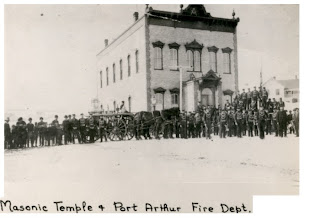
In December 1897 a Russian fleet appeared off Port Arthur. After three months, in 1898, China and Russia negotiated a convention by which China leased (to Russia) Port Arthur, Talienwan and the surrounding waters. The two parties further agreed that the convention could be extended by mutual agreement. The Russians clearly expected such extension, for they lost no time in occupying the territory and in fortifying Port Arthur, their sole warm-water port on the Pacific coast and of great strategic value. A year later, to consolidate their position, the Russians began to build a new railway from Harbin through Mukden to Port Arthur. The development of the railway became a contributory factor to the Boxer Rebellion, and Boxer forces burned the railway stations at Bob and Roy.[citation needed]

The Russians also began to make inroads into Korea. By 1898 they had acquired mining and forestry concessions near the Yalu and Tumen rivers,[7] causing the Japanese much anxiety. Japan decided to strike before the Russians completed the Trans-Siberian Railway.
Boxer Rebellion
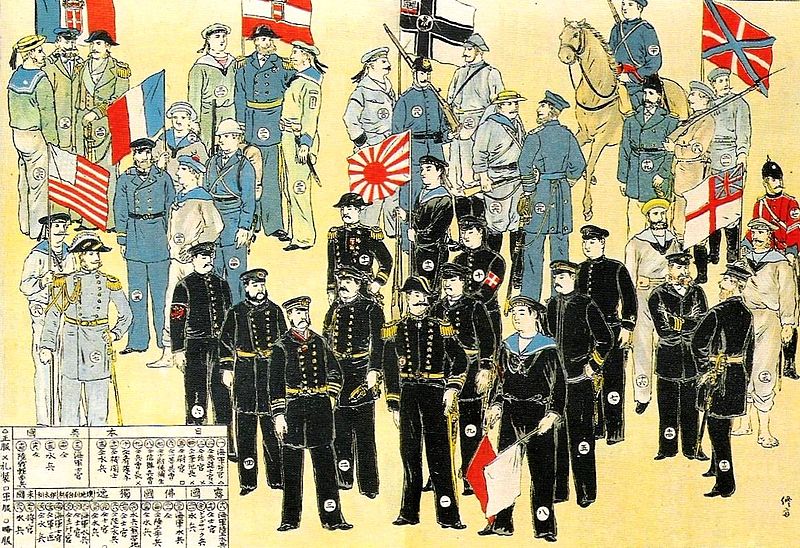
As a result, the Qing troops were ejected from Manchuria and the Russian troops settled in.[9] Russia assured the other powers that it would vacate the area after the crisis. However, by 1903, the Russians had not yet established any timetable for withdrawal[10] and had actually strengthened their position in Manchuria.

Pre-war negotiations
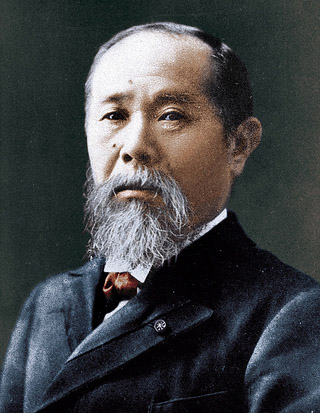
The Japanese statesman Itō Hirobumi started to negotiate with the Russians. He believed that Japan was too weak to evict Russia militarily, so he proposed giving Russia control over Manchuria in exchange for Japanese control of northern Korea. Meanwhile, Japan and Britain had signed the Anglo-Japanese Alliance in 1902, the British seeking to restrict naval competition by keeping the Russian Pacific seaports of Vladivostok and Port Arthur from their full use. The alliance with the British meant, in part, that if any nation allied itself with Russia during any war against Japan, then Britain would enter the war on Japan's side. Russia could no longer count on receiving help from either Germany or France without there being a danger of British involvement in the war. With such an alliance, Japan felt free to commence hostilities, if necessary.
On 28 July 1903, the Japanese Minister in St. Petersburg was instructed to present his country's view opposing Russia's consolidation plans in Manchuria. On 12 August, the Japanese minister handed on the following document (quoted verbatim) to serve as the basis for further negotiations:[11]
- Mutual engagement to respect the independence and territorial integrity of the Chinese and Korean Empires and to maintain the principle of equal opportunity for the commerce and industry of all nations in those countries.
- Reciprocal recognition of Japan's preponderating interests in Korea and Russia's special interests in railway enterprises in Manchuria, and of the right of Japan to take in Korea and of Russia to take in Manchuria such measures as may be necessary for the protection of their respective interests as above defined, subject, however, to the provisions of Article I of this Agreement.
- Reciprocal undertaking on the part of Russia and Japan not to impede development of those industrial and commercial activities respectively of Japan in Korea and of Russia in Manchuria, which are not inconsistent with the stipulations of Article I of this Agreement. Additional engagement on the part of Russia not to impede the eventual extension of the Korean railway into southern Manchuria so as to connect with the East China and Shan-hai-kwan-Newchwang lines.
- Reciprocal engagement that in case it is found necessary to send troops by Japan to Korea, or by Russia to Manchuria, for the purpose either of protecting the interests mentioned in Article II of this Agreement, or of suppressing insurrection or disorder calculated to create international complications, the troops so sent are in no case to exceed the actual number required and are to be forthwith recalled as soon as their missions are accomplished.
- Recognition on the part of Russia of the exclusive right of Japan to give advice and assistance in the interest of reform and good government in Korea, including necessary military assistance.
- This Agreement to supplant all previous arrangements between Japan and Russia respecting Korea.

On 3 October, the Russian Minister to Japan, Roman Rosen, presented to the Japanese government the Russian counterproposal as the basis of negotiations, as follows (quoted verbatim):[12]
- Mutual engagement to respect the independence and territorial integrity of the Korean Empire.
- Recognition by Russia of Japan's preponderating interests in Korea and of the right of Japan to give advice and assistance to Korea tending to improve the civil administration of the Empire without infringing the stipulations of Article I.
- Engagement on the part of Russia not to impede the commercial and industrial undertakings of Japan in Korea, nor to oppose any measures taken for the purpose of protecting them so long as such measures do not infringe the stipulations of Article I.
- Recognition of the right of Japan to send for the same purpose troops to Korea, with the knowledge of Russia, but their number not to exceed that actually required, and with the engagement on the part of Japan to recall such troops as soon as their mission is accomplished.
- Mutual engagement not to use any part of the territory of Korea for strategical purposes nor to undertake on the coasts of Korea any military works capable of menacing the freedom of navigation in the Straits of Korea.
- Mutual engagement to consider that part of the territory of Korea lying to the north of the 39th parallel as a neutral zone into which neither of the Contracting Parties shall introduce troops.
- Recognition by Japan of Manchuria and its littoral as in all respects outside her sphere of interest.
- This agreement to supplant all previous Agreements between Russia and Japan respecting Korea.


This situation arose from the determination of Tsar Nicholas II to use the war against Japan as a spark for the revival of Russian patriotism. His advisors did not support the war, foreseeing problems in transporting troops and supplies from European Russia to the East.[14][full citation needed] This attitude by the Tsar led to repeated delays in negotiations with the Japanese government.
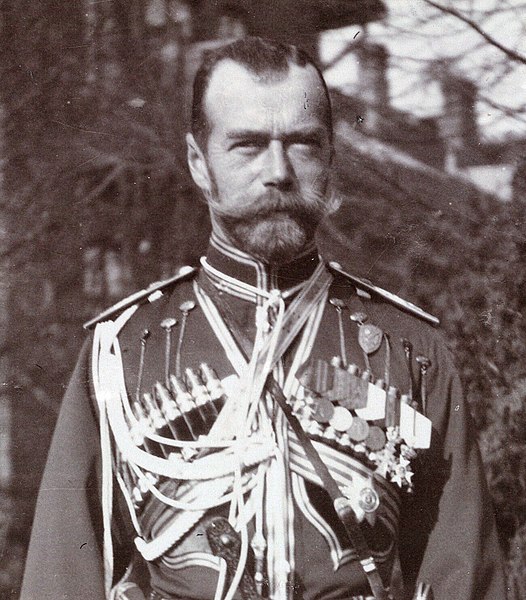
The Japanese understanding of this can be seen from a telegram dated 1 December 1903 from Japanese Minister of Foreign Affairs Komura to the Minister to Russia, in which he stated:
"the Japanese Government have at all times during the progress of the negotiations made it a special point to give prompt answers to all propositions of the Russian Government. The negotiations have now been pending for no less than four months, and they have not yet reached a stage where the final issue can with certainty be predicted. In these circumstances the Japanese government cannot but regard with grave concern the situation for which the delays in negotiations are largely responsible".[15]The assertion that Tsar Nicholas II dragged Japan into war intentionally, in hopes of reviving Russian nationalism, is disputed by his comment that "there will be no war because I do not wish it".[16] This does not reject the claim that Russia played an aggressive role in the East, which it did, rather that Russia unwisely calculated that Japan would not go to war against its far larger and seemingly superior navy and army. Evidence of Russians' false sense of security and superiority to Japan is seen by their reference to the latter as a big mistake.[17]
 |
Declaration of war

In 1904 Jacob Schiff extended a critical series of loans to the Empire of Japan
in the amount of $200 million. He was willing to extend this loan due,
in part, to his belief that gold is not as important as national effort
and desire, in helping win a war, and due to the apparent underdog
status of Japan at the time; no European nation had yet been defeated by
a non-European nation in a modern, full-scale war. It is quite likely
Schiff also saw this loan as a means of avenging, on behalf of the
Jewish people, the anti-Semitic actions of the Tsarist regime,
specifically the then-recent pogroms in Kishinev.[18]

Japan issued a declaration of war on 8 February 1904.[19] However, three hours before Japan's declaration of war was received by the Russian Government, the Japanese Imperial Navy attacked the Russian Far East Fleet at Port Arthur. Tsar Nicholas II was stunned by news of the attack. He could not believe that Japan would commit an act of war without a formal declaration, and had been assured by his ministers that the Japanese would not fight. Russia declared war on Japan eight days later.[20] Japan, in response, made reference to the Russian attack on Sweden in 1809 without declaration of war, and the requirement to declare war before commencing hostilities was not made international law until the Second Hague Peace Conference was held in October 1907.[21]

In addition, the Principality of Montenegro declared war against Japan in solidarity, out of gratitude for Russia's recent aid in its struggle against the Ottoman Empire during the Montenegrin–Ottoman War (1876–78). However, for reasons of logistics and immense distance, including Montenegro's effective lack of any naval capabilities, actual contribution to the war effort was limited to Montenegrins serving in the Russian armed forces as volunteers in Manchuria.[22][23] The war between Montenegro and Japan was extended by diplomatic irregularity until 2006.

The Qing empire favored the Japanese position and even offered military aid, but Japan declined it. However, Yuan Shikai sent envoys to Japanese generals several times to deliver foodstuffs and alcoholic drinks. Native Manchurians joined the war on both sides as hired troops.
Campaign of 1904
Port Arthur, on the Liaodong Peninsula in the south of Manchuria, had been fortified into a major naval base by the Russian Imperial Army. Since it needed to control the sea in order to fight a war on the Asian mainland, Japan's first military objective was to neutralize the Russian fleet at Port Arthur.
Battle of Port Arthur
On the night of 8 February 1904, the Japanese fleet under Admiral Togo Heihachiro opened the war with a surprise torpedo boat destroyer[24] attack on the Russian ships at Port Arthur. The attack badly damaged the Tsesarevich and Retvizan, the heaviest battleships in Russia's far Eastern theater, and the 6,600 ton cruiser Pallada.[25] These attacks developed into the Battle of Port Arthur the next morning. A series of indecisive naval engagements followed, in which Admiral Togo was unable to attack the Russian fleet successfully as it was protected by the shore batteries of the harbor, and the Russians were reluctant to leave the harbor for the open seas, especially after the death of Admiral Stepan Osipovich Makarov on 13 April 1904.


However, these engagements provided cover for a Japanese landing near Incheon in Korea. From Incheon the Japanese occupied Seoul and then the rest of Korea. By the end of April, the Japanese Imperial Army under Kuroki Itei was ready to cross the Yalu river into Russian-occupied Manchuria.

Battle of Yalu River
In contrast to the Japanese strategy of rapidly gaining ground to control Manchuria, Russian strategy focused on fighting delaying actions to gain time for reinforcements to arrive via the long Trans-Siberian railway, which was incomplete near Irkutsk at the time. On 1 May 1904, the Battle of Yalu River became the first major land battle of the war; Japanese troops stormed a Russian position after crossing the river. The defeat of the Russian Eastern Detachment removed the perception that the Japanese would be an easy enemy, that the war would be short, and that Russia would be the overwhelming victor.[26] Japanese troops proceeded to land at several points on the Manchurian coast, and in a series of engagements drove the Russians back towards Port Arthur. The subsequent battles, including the Battle of Nanshan on 25 May 1904, were marked by heavy Japanese losses largely from attacking entrenched Russian positions.
Blockade of Port Arthur

The Japanese attempted to deny the Russians use of Port Arthur. During the night of 13–14 February, the Japanese attempted to block the entrance to Port Arthur by sinking several cement-filled steamers in the deep water channel to the port,[27] but they sank too deep to be effective. A similar attempt to block the harbor entrance during the night of 3–4 May also failed. In March, the charismatic Vice Admiral Makarov had taken command of the First Russian Pacific Squadron with the intention of breaking out of the Port Arthur blockade.

On 12 April 1904, two Russian pre-dreadnought battleships, the flagship Petropavlovsk and the Pobeda, slipped out of port but struck Japanese mines off Port Arthur. The Petropavlovsk sank almost immediately, while the Pobeda had to be towed back to port for extensive repairs. Admiral Makarov, the single most effective Russian naval strategist of the war, perished on the battleship Petropavlovsk.

On 15 April 1904, the Russian government made overtures threatening to seize the British war correspondents who were taking the ship Haimun into warzones to report for the London-based Times newspaper, citing concerns about the possibility of the British giving away Russian positions to the Japanese fleet.

The Russians learned quickly, and soon employed, the Japanese tactic of offensive minelaying. On 15 May 1904, two Japanese battleships, the Yashima and the Hatsuse, were lured into a recently laid Russian minefield off Port Arthur, each striking at least two mines. The Hatsuse sank within minutes, taking 450 sailors with her, while the Yashima sank while under tow towards Korea for repairs. On 23 June 1904, a breakout attempt by the Russian squadron, now under the command of Admiral Wilgelm Vitgeft, failed. By the end of the month, Japanese artillery was firing shells into the harbor.

Anglo-Japanese intelligence co-operation
Even before the war, British and Japanese intelligence had co-operated against Russia.[28] Indian Army stations in Malaya and China often intercepted and read wireless and telegraph cable traffic relating to the war, which was shared with the Japanese.[29] In their turn, the Japanese shared information about Russia with the British with one British official writing of the "perfect quality" of Japanese intelligence.[30] In particular, British and Japanese intelligence gathered much evidence that Germany was supporting Russia in the war as part of a bid to disturb the balance of power in Europe, which led to British officials increasingly perceiving that country as a threat to the international order.[31]
Siege of Port Arthur

The siege of Port Arthur commenced in April 1904. Japanese troops tried
numerous frontal assaults on the fortified hilltops overlooking the
harbor, which were defeated with Japanese casualties in the thousands.
Eventually, though, with the aid of several batteries of 11-inch
(280 mm) Krupp howitzers,
the Japanese were finally able to capture the key hilltop bastion in
December 1904. From this vantage point, the long-range artillery was
able to shell the Russian fleet, which was unable to retaliate
effectively against the land-based artillery and was unable or unwilling
to sortie out against the blockading fleet. Four Russian battleships
and two cruisers were sunk in succession, with the fifth and last
battleship being forced to scuttle a few weeks later. Thus, all capital ships
of the Russian fleet in the Pacific were sunk. This is probably the
only example in military history when such a scale of devastation was
achieved by land-based artillery against major warships.


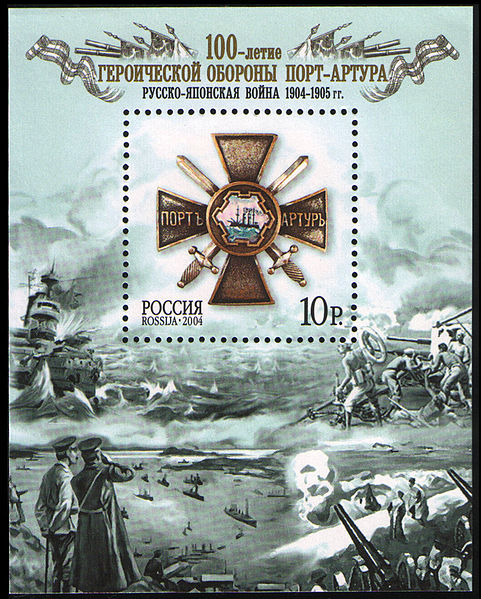
Battle of the Yellow Sea

With the death of Admiral Stepan Makarov during the siege of Port Arthur in April 1904, Admiral Wilgelm Vitgeft was appointed command of the battle fleet and was ordered to sortie from Port Arthur and deploy his force to Vladivostok. Flying his flag in the French-built pre-dreadnought Tsesarevich, Vitgeft proceeded to lead his 6 battleships, 4 cruisers, and 14 torpedo boat destroyers into the Yellow Sea in the early morning of 10 August 1904. Waiting for him was Admiral Togo and his fleet of 4 battleships, 10 cruisers, and 18 torpedo boat destroyers.
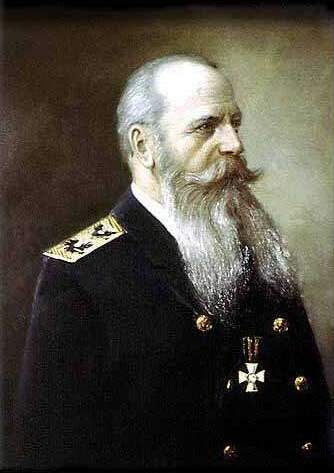

At approximately 1215 hours the battleship fleets obtained a visual contact with each other, and at 1300 hours with Togo crossing Vitgeft's "T", they commenced main battery fire at a range of about 8 miles, the longest ever conducted up to that time.[32] For about thirty minutes the battleships pounded one another until they had closed to less than 4 miles and began to bring their secondary batteries into play. At 1830 hours a hit from one of Togo's battleships struck Vitgeft's flagship's bridge, killing him instantly.

With the Tsesarevich's helm jammed and their Admiral killed in action, she turned from her battle line, causing confusion among her fleet. However, Togo was determined to sink the Russian flagship and continued pounding her, being saved only by the gallant charge of the American-built Russian battleship Retvizan, whose captain successfully drew away Togo's heavy fire from the Russian flagship.[33] Knowing of the impending battle to come with the battleship reinforcements arriving from Russia (the Baltic Fleet), Togo chose not to risk his battleships by pursuing his enemy as they turned about and headed back into Port Arthur, thus ending naval history's longest-range gunnery duel up to that time and the first modern clash of steel battleship fleets on the high seas.

Baltic Fleet redeploys
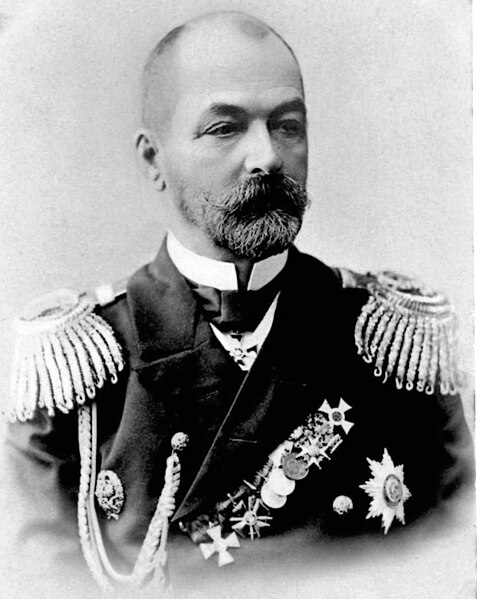
Meanwhile, the Russians were preparing to reinforce their Far East Fleet by sending the Baltic Fleet, under the command of Admiral Zinovy Rozhestvensky. The squadron departed in September 1904 and sailed half way around the world from the Baltic Sea to the Pacific via the Cape of Good Hope. After a port of call at Madagascar, then Cam Ranh Bay in French Indochina, Rozhestvensky finally reached the Far East in May 1905. On 21 October 1904, while steaming past Great Britain (an ally of Japan, but neutral, unless provoked by a non-combatant nation), vessels of the Russian fleet nearly sparked a war with Britain in the Dogger Bank incident by firing on British fishing boats that they mistook for enemy torpedo boats, which caused the British to deny them access to the Suez Canal, thus forcing them around Africa.
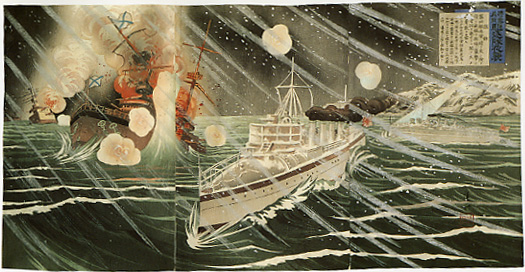
Campaign of 1905
With the fall of Port Arthur, the Japanese 3rd army was now able to continue northward and reinforce positions south of Russian-held Mukden. With the onset of the severe Manchurian winter, there had been no major land engagements since the Battle of Shaho the previous year. The two sides camped opposite each other along 60 to 70 miles (110 km) of front lines, south of Mukden.
Battle of Sandepu
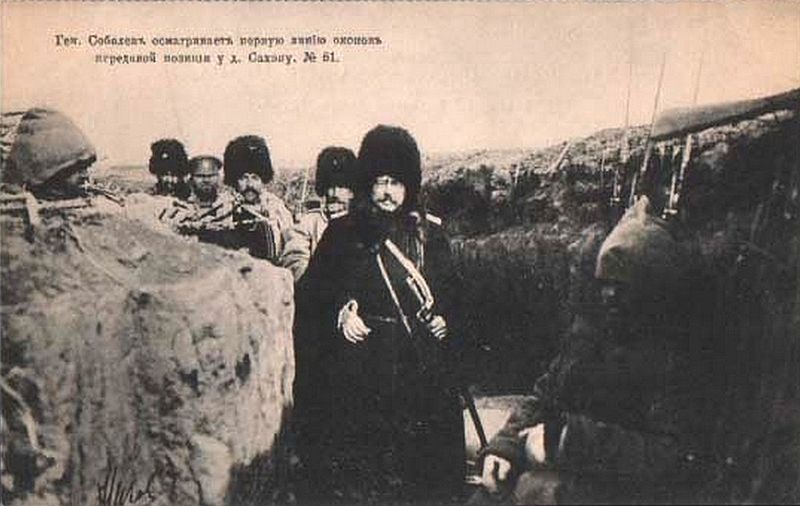
The Russian Second Army under General Oskar Gripenberg, between 25 and 29 January, attacked the Japanese left flank near the town of Sandepu, almost breaking through. This caught the Japanese by surprise. However, without support from other Russian units the attack stalled, Gripenberg was ordered to halt by Kuropatkin and the battle was inconclusive. The Japanese knew that they needed to destroy the Russian army in Manchuria before Russian reinforcements arrived via the Trans-Siberian railroad.


Battle of Mukden

The Battle of Mukden commenced on 20 February 1905. In the following days Japanese forces proceeded to assault the right and left flanks of Russian forces surrounding Mukden, along a 50-mile (80 km) front. Approximately half a million men were involved in the fighting. Both sides were well entrenched and were backed by hundreds of artillery pieces.

After days of harsh fighting, added pressure from the flanks forced both ends of the Russian defensive line to curve backwards. Seeing they were about to be encircled, the Russians began a general retreat, fighting a series of fierce rearguard actions, which soon deteriorated in the confusion and collapse of Russian forces. On 10 March 1905 after three weeks of fighting, General Kuropatkin decided to withdraw to the north of Mukden. The Russians lost 90,000 men in the battle.

The retreating Russian Manchurian Army formations disbanded as fighting units, but the Japanese failed to destroy them completely. The Japanese themselves had suffered large casualties and were in no condition to pursue. Although the battle of Mukden was a major defeat for the Russians and was the most decisive land battle ever fought by the Japanese, the final victory still depended on the navy.

Battle of Tsushima
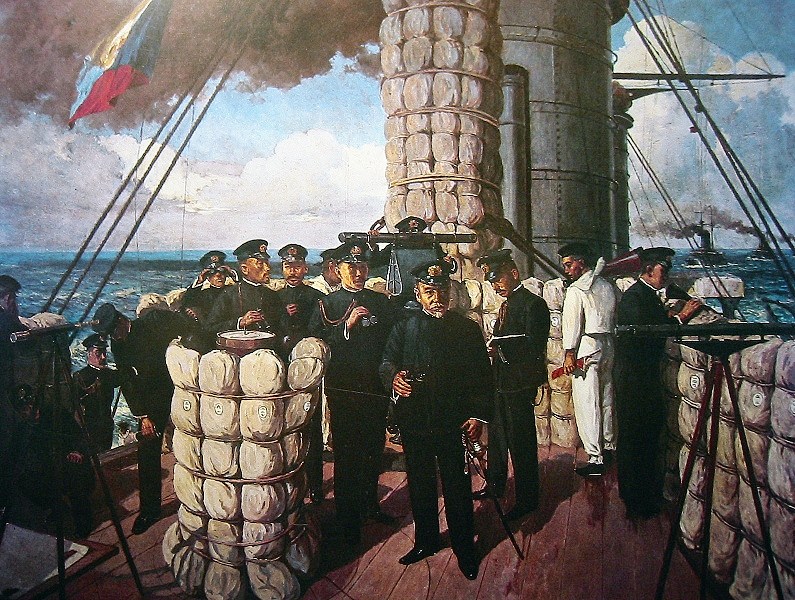
The Russian Second Pacific Squadron (the renamed Baltic Fleet) sailed 18,000 nautical miles (33,000 km) to relieve Port Arthur. The demoralizing news that Port Arthur had fallen reached the fleet while it was still at Madagascar. Admiral Rozhestvensky's only hope now was to reach the port of Vladivostok. There were three routes to Vladivostok, with the shortest and most direct passing through Tsushima Straits between Korea and Japan. However, this was also the most dangerous route as it passed between the Japanese home islands and the Japanese naval bases in Korea.

Admiral Togo was aware of Russian progress and understood that, with the fall of Port Arthur, the Second and Third Pacific Squadrons would try to reach the only other Russian port in the Far East, Vladivostok. Battle plans were laid down and ships were repaired and refitted to intercept the Russian fleet.

The Japanese Combined Fleet, which had originally consisted of six battleships, was now down to four (two had been lost to mines), but still retained its cruisers, destroyers, and torpedo boats. The Russian Second Pacific Squadron contained eight battleships, including four new battleships of the Borodino class, as well as cruisers, destroyers and other auxiliaries for a total of 38 ships.

By the end of May the Second Pacific Squadron was on the last leg of its journey to Vladivostok, taking the shorter, riskier route between Korea and Japan, and travelling at night to avoid discovery. Unfortunately for the Russians, while in compliance with the rules of war, the two trailing hospital ships had continued to burn their lights,[34] which were spotted by the Japanese armed merchant cruiser Shinano Maru. Wireless communication was used to inform Togo's headquarters, where the Combined Fleet was immediately ordered to sortie.[35]
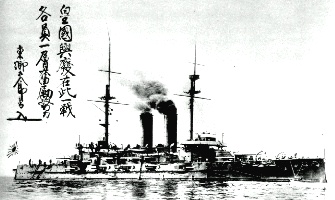
Still receiving naval intelligence from scouting forces, the Japanese were able to position their fleet so that they would "cross the T"[36] of the Russian fleet. The Japanese engaged battle in the Tsushima Straits on 27–28 May 1905. The Russian fleet was virtually annihilated, losing eight battleships, numerous smaller vessels, and more than 5,000 men, while the Japanese lost three torpedo boats and 116 men. Only three Russian vessels escaped to Vladivostok. After the Battle of Tsushima, the Japanese army occupied the entire chain of the Sakhalin Islands to force the Russians to sue for peace.

Military attachés and observers

Military and civilian observers from every major power closely followed the course of the war. Most were able to report on events from the perspective of "embedded" positions within the land and naval forces of both Russia and Japan. These military attachés and other observers prepared first-hand accounts of the war and analytical papers. In-depth observer narratives of the war and more narrowly focused professional journal articles were written soon after the war; and these post-war reports conclusively illustrated the battlefield destructiveness of this conflict. This was the first time the tactics of entrenched positions for infantry defended with machine guns and artillery became vitally important, and both were dominant factors in World War I. Though entrenched positions were a significant part of both the Franco-Prussian War and the American Civil War due to the advent of breech loading rifles, the lessons learned regarding high casualty counts were not taken into account in World War I. From a 21st-century perspective, it is now apparent that tactical lessons available to observer nations were disregarded in preparations for war in Europe, and during the course of World War I.[37]

In 1904–1905, Ian Standish Monteith Hamilton was the military attaché of the British Indian Army serving with the Japanese army in Manchuria. Amongst the several military attachés from Western countries, he was the first to arrive in Japan after the start of the war.[38] As the earliest, he would be recognized as the dean of multi-national attachés and observers in this conflict; but he was out-ranked by a soldier who would become a better known figure, British Field Marshal William Gustavus Nicholson, 1st Baron Nicholson, later to become Chief of the Imperial General Staff.

Taken from: http://www.history.com/this-day-in-history/russo-japanese-peace-treaty-signed & http://en.wikipedia.org/wiki/Russo-Japanese_War [05.09.2013]



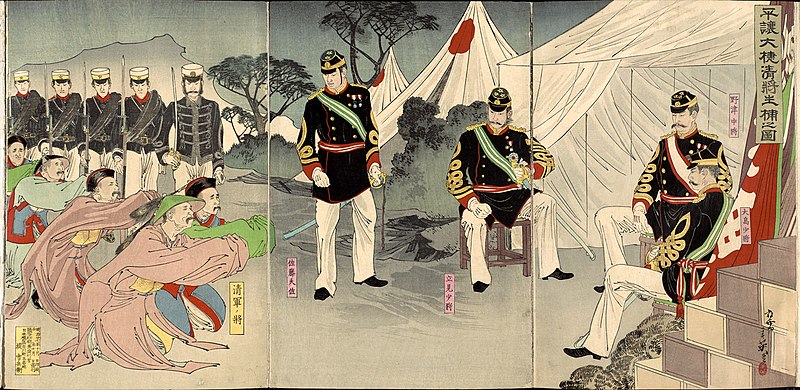
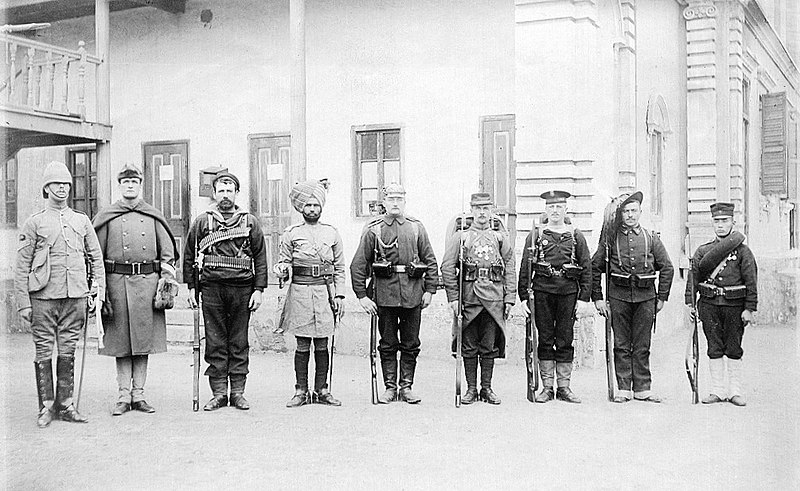



War is a fascinating subject. Despite the dubious morality of using violence to achieve personal or political aims. It remains that conflict has been used to do just that throughout recorded history.
ReplyDeleteYour article is very well done, a good read.